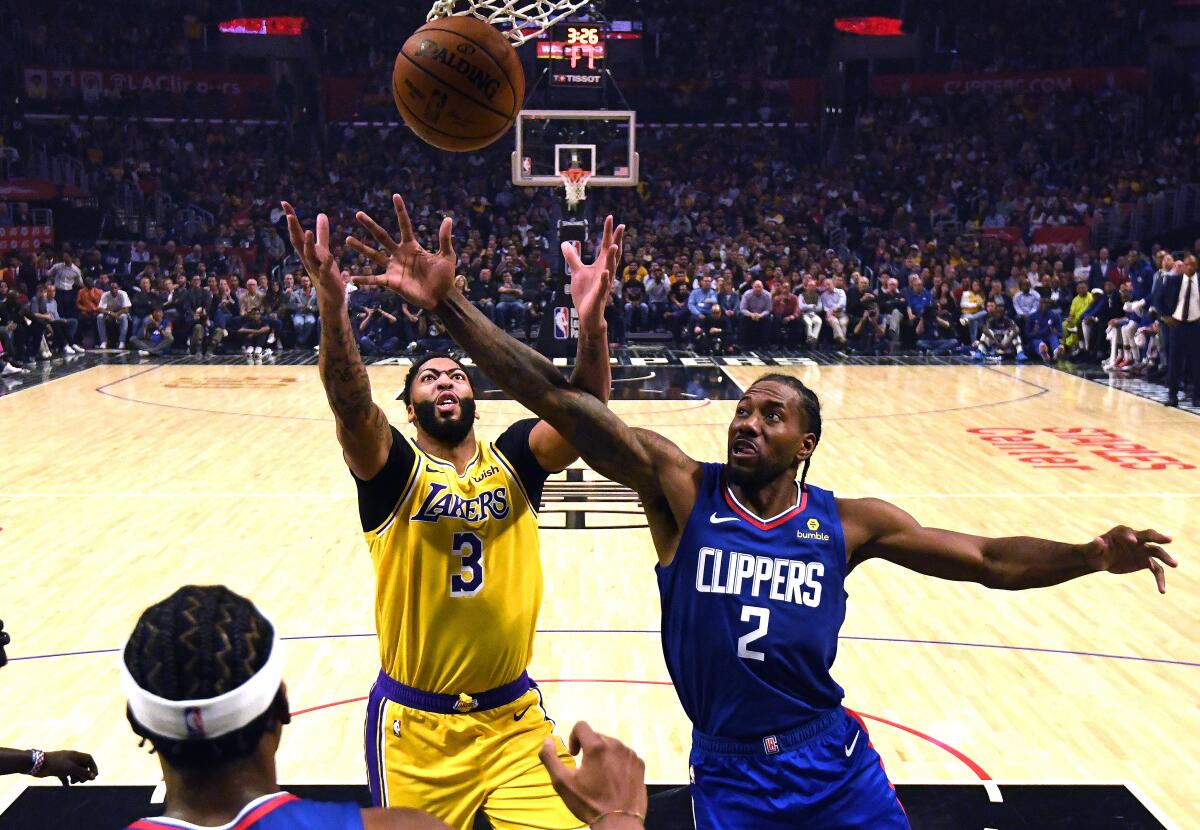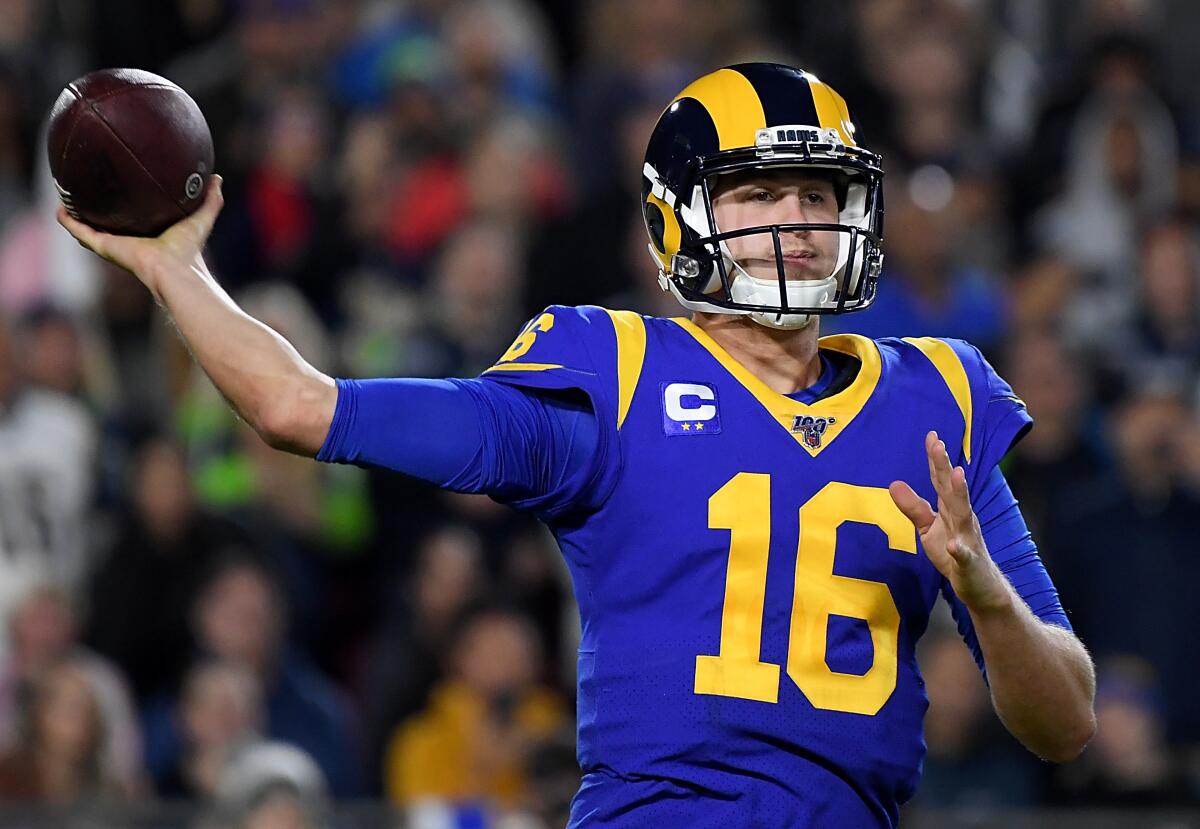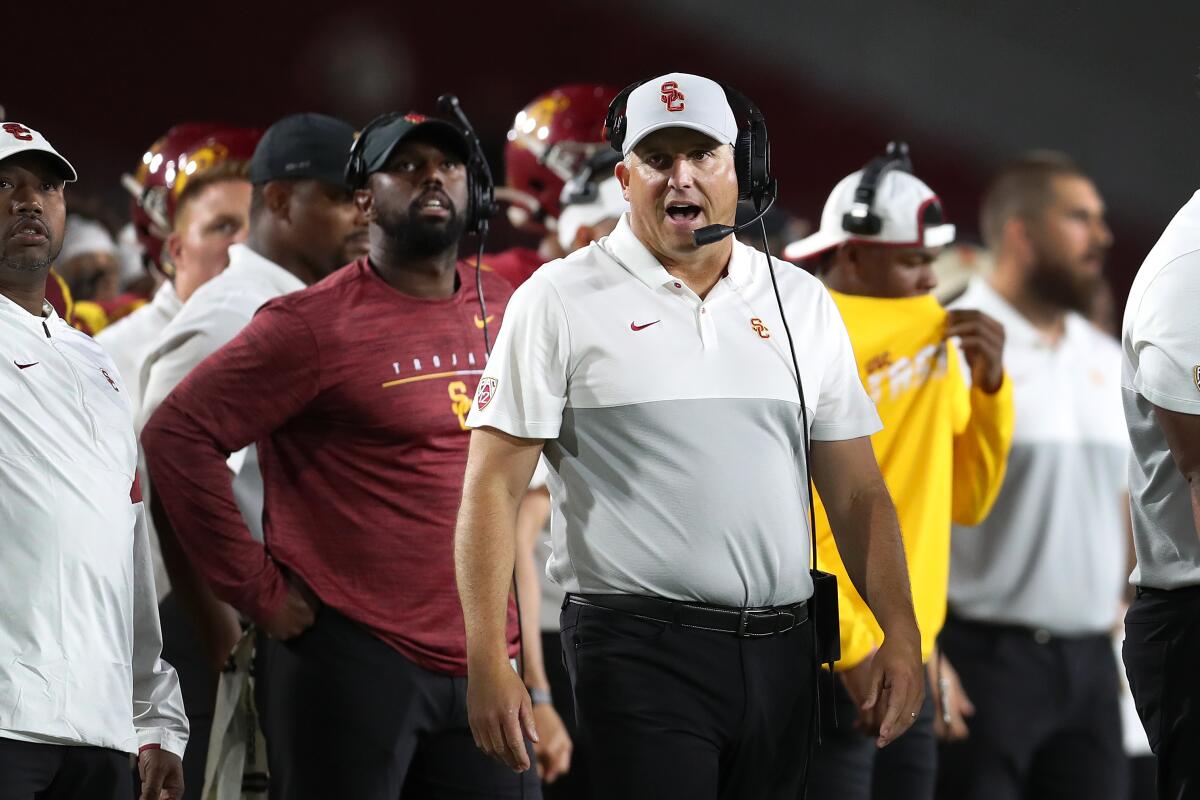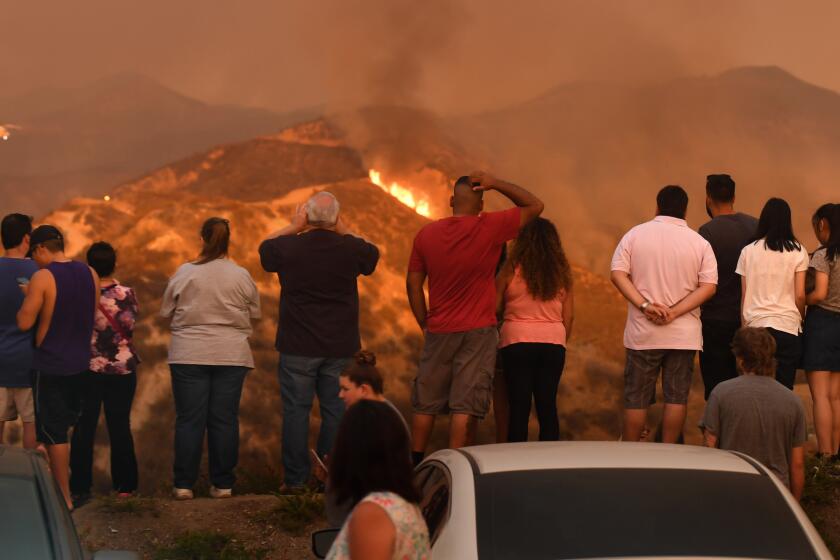Sports looks ahead to 2020: Will the Lakers or Clippers win an NBA title?

- Share via
You can’t really blame people for getting worked up, for jumping ahead of themselves.
The moment L.A.’s two NBA teams announced their blockbuster deals last summer — the Lakers trading for Anthony Davis, the Clippers acquiring Kawhi Leonard and Paul George — all eyes turned to the playoffs next spring.
Oddsmakers added fuel to the hype, immediately listing the teams as favorites for the championship. Davis had to step in with a bit of perspective, saying: “We still have a lot of work to do.”
It’s been that kind of year on the Southern California sports scene. With no major titles to celebrate, no victory parades, the biggest stories have been more about what happens next.
Will disappointing seasons for the Rams and Chargers put a dent in ticket sales at a $5-billion stadium scheduled to open in the summer? What will a new athletic director — and a not-so-new coach — mean for USC’s football program?
This year, good news was overshadowed by a government shutdown, impeachment debates, mass shootings and cheating scandals.
At Santa Anita Park, where 37 horses have died in the last racing year, management faces tough decisions, fending off calls for the abolishment of thoroughbred racing.
“The test of this is going to happen over time,” said Aidan Butler, an executive with the track’s ownership, adding: “We are looking at everything.”
To understand the headlines of 2019, it seems, we need to consider their ramifications for 2020.
::

Late November told fans all they needed to know about the NFL in Southern California this season.
In a span of eight days, Chargers quarterback Philip Rivers threw four interceptions in a 24-17 loss to Kansas City and the Rams heard boos from the home crowd as they fell 45-6 to Baltimore on “Monday Night Football.”
“Long night,” Rams edge rusher Dante Fowler said.
With neither team meeting preseason expectations, the Rams have played before less-than-full crowds at the Coliseum this fall. Crowds at Dignity Health Sports Park have been dominated by fans who come to see the other team — not the Chargers.
“Felt like an away game, every week,” receiver Keenan Allen said. “It is what it is at this point.”
Quarterbacks for both franchises have been inconsistent, with the Rams’ Jared Goff ranking in the lower half of the league and Rivers playing badly enough at times to make people wonder if his career is drawing to an end.
What does all that mean for the debut of SoFi Stadium in Inglewood?
“You can afford not to win for the first couple years because you have this halo effect,” said David Carter, founder of The Sports Business Group. “Fans want to cycle through the new building and have a chance to experience that.”
But the home teams cannot remain mediocre for too long, given the city’s competitive entertainment market — lots of options — and the notoriously fickle nature of the customer.
“Sports fans in L.A. have the attention span of toddlers,” Carter said. “If there isn’t something grabbing their attention, they’re going to move on to the next shiny object.”
::

It was no great surprise when, after three rocky seasons, Lynn Swann stepped down as USC athletic director in September. Or when the university turned to the respected Mike Bohn to replace him.
The shocker came earlier this month as Bohn ignored public sentiment by choosing to keep Clay Helton as football coach.
He is sticking with a coach whose record is 13-11 over the past two seasons, who has struggled on the recruiting trail of late. Bohn conceded that Trojans fans might be “angry and frustrated” by his decision.
“We all want the same thing,” he insisted.
You can argue that USC, beset by academic and administrative scandals, needs someone like Helton, a decent person who has run a clean program. But that won’t make things any easier next fall.
Much depends on the maturation of quarterback Kedon Slovis and retaining offensive coordinator Graham Harrell, who revamped the passing attack and has received interest from other schools. Helton promised: “We have a young team on the verge of doing something special.”
There is another interesting scenario across town at UCLA, where athletic director Dan Guerrero — a polarizing figure — made news by announcing he will retire in July. His replacement will inherit a relatively new basketball coach in Mick Cronin, hired last April, and a football coach, Chip Kelly, whose five-year, $23.3-million contract has yet to pay off on the field.
But the pressure in Westwood probably cannot compare with the hot seat that awaits Bohn and Helton. With a season opener against powerhouse Alabama, the situation could turn ugly in a hurry.
“We know the expectations of our fans are high,” Helton said. “As they should be.”
::

No one can stop fans from getting excited over the Lakers and Clippers, who rank among the top NBA teams in the early stages of this season.
Or talking baseball because the Dodgers’ Cody Bellinger and the Angels’ Mike Trout collected most valuable player awards this fall.
Or celebrating UCLA’s victory in the NCAA softball championships.
But of all the stories from 2019, none will reverberate more urgently than the life-and-death state of affairs at Santa Anita.
After the first 30 thoroughbreds died through summer, officials implemented a series of reforms, outlawing certain medications on race day and increasing veterinarian oversight. None of that prevented seven more horses going down in the fall.
Now the state has voted to implement restrictions on riding crop use by jockeys and the track must consider switching to a synthetic surface, which would be statistically safer in terms of fatalities but could lead to more soft-tissue injuries. A decision is expected in coming months.
“Reform is certainly taking place,” said Darcy K. Fudge Kamal, an asst. professor of business at Chapman University who studies the industry. “New safety protocols already exist and it is likely more will follow.”
Next year could have ramifications for not only the track, but the sport as a whole.
Days before the recent Breeders’ Cup — just before the most recent fatality — Sen. Dianne Feinstein (D-Calif.) delivered a stern warning to the California Horse Racing Board.
“If horse racing cannot be conducted in a safe and humane manner that protects the life and safety of horses and jockeys,” she wrote in a letter, “it may be time to reexamine the future of this sport in our state and in our country.”
More to Read
Go beyond the scoreboard
Get the latest on L.A.'s teams in the daily Sports Report newsletter.
You may occasionally receive promotional content from the Los Angeles Times.












